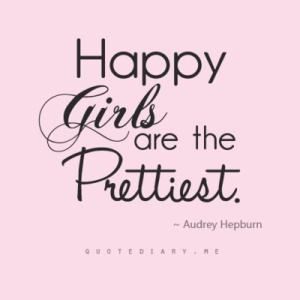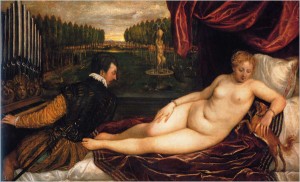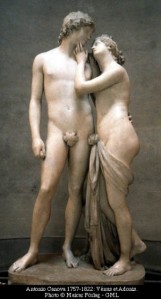
Audrey Hepburn quote
Picture sourced from http://pinterest.com/pin/235876099203585092/
Audrey Hepburn’s quote, “Happy girls are the prettiest”, although poignant and comforting, feels about as useful as “it’s what’s on the inside that counts” in the context of the hyper-sensitive world of social and mass media. The ugly truth is that the media, the supposed reflection of society, devalues these statements every time they put a sullen scrawny former beauty with a duck-face pout on magazines and television. This is because they are sending out a message to all women that this is a representation of what women look like (or should look like). This results in a consequence which the next picture depicts. Women lose the ability to value their own body image because they are too busy measuring it against the yard-stick (or rather the stick-thin model) of “perfection”. Was it always like this though?
When looking at the Renaissance art portrayals of women, it’s hard to believe they even belong to the same human species, much less the same gender, as the wasp-like models gracing magazine covers (the modern art portrait).

Venus with Organist and Dog
Picture sourced from http://venice.umwblogs.org/exhibit/titians-venetian-venuses/venus-with-musicians-theme/
In Titian’s “Venus with an Organist and Dog” (1550s), we are confronted with the female form in all its pre-liposuction glory. Venus, the women portrayed, is the Roman goddess of love, beauty and sex and in this painting she embodies these traits, even though she does not fit our modern conception of what’s sexy and beautiful. Her body is rippled and dimpled, her thighs and body proportion measure up to 3 run-way models put together and her skin is loose and flabby- and yet she exudes this irresistible allure and seduction. This was the common representation of women in art of that time period; this was the common ideal of feminine beauty.
This also extends to representations of men in those times. Men are now portrayed in the media as muscular gorilla-like figures, resembling an abstract art piece that juxtaposes different muscles in compilation instead of blotches of paint.

Aphrodite and Adonis
Picture sourced from http://www.greekmyths-greekmythology.com/myth-aphrodite-adonis/
In Antonio Canova’s “Venus and Adonis” (1757-1822), Adonis, the Greek god of love, beauty and pleasure, is represented as a thin subtly muscular man- a sight not usually seen on the cover of men’s health and fitness magazines. Even Adonis, the ideal of beauty personified as a God, as represented here cannot measure up to the modern conception of male beauty, so what chance does the rest of the male population have? What chance do women have either?
Not much, according to a story Posh24.com published that reveals that even Filippa Hamilton had her photos for a Ralph Lauren campaign photoshopped to make the 54kg supermodel look thinner. http://www.posh24.com/filippa_hamilton/ralph_lauren_model_i_was_fired_for_being_too_fat
Not only did she look inhumanly thin in the photos, with her head literally wider than her hips, she also claims she was fired for being too “fat” to fit into the clothes. If at 54kg a woman is still too “fat” to be beautiful without photoshop, how skinny do the media want us to go?
In an episode of Ugly Betty, a television show about a fashion magazine, this issue is dwelled on. In Episode 2 of Season 1, a natural-looking “normal everyday girl” model poses for fashion photos but the magazine ends up photoshopping them until her body is unrecognisable.
In this video, Betty is talking to a group of women about this incident, insisting that the model looked beautiful the way she was. In reply, one of the women said, “Perfection sells fashion. It’s all fake and unattainable but nobody seems to get it.” This is the truth about modern beauty- no matter how hard we may try, we will never measure up because the media has made it so to keep us buying magazines and dieting products because they profit. If beauty becomes attainable, we have no reason to keep buying their “perfection playbooks” a.k.a. magazines because we are already beautiful from the first buy. This a stark contrast from the times that portrayed real fleshy women as ideals of beauty because feminine beauty was represented by the everyday women surrounding them- not a single media-set representation of women skewed by profit interests, as it stands now.
Women should judge their beauty by the everyday standards of the women surrounding them, taking care to treasure what makes them unique in their imperfection and thus makes them human and impossible to replicate. In the words of Marilyn Monroe, “To all the girls that think you’re ugly because you’re not a size 0, you’re the beautiful one. Its society who’s ugly.”